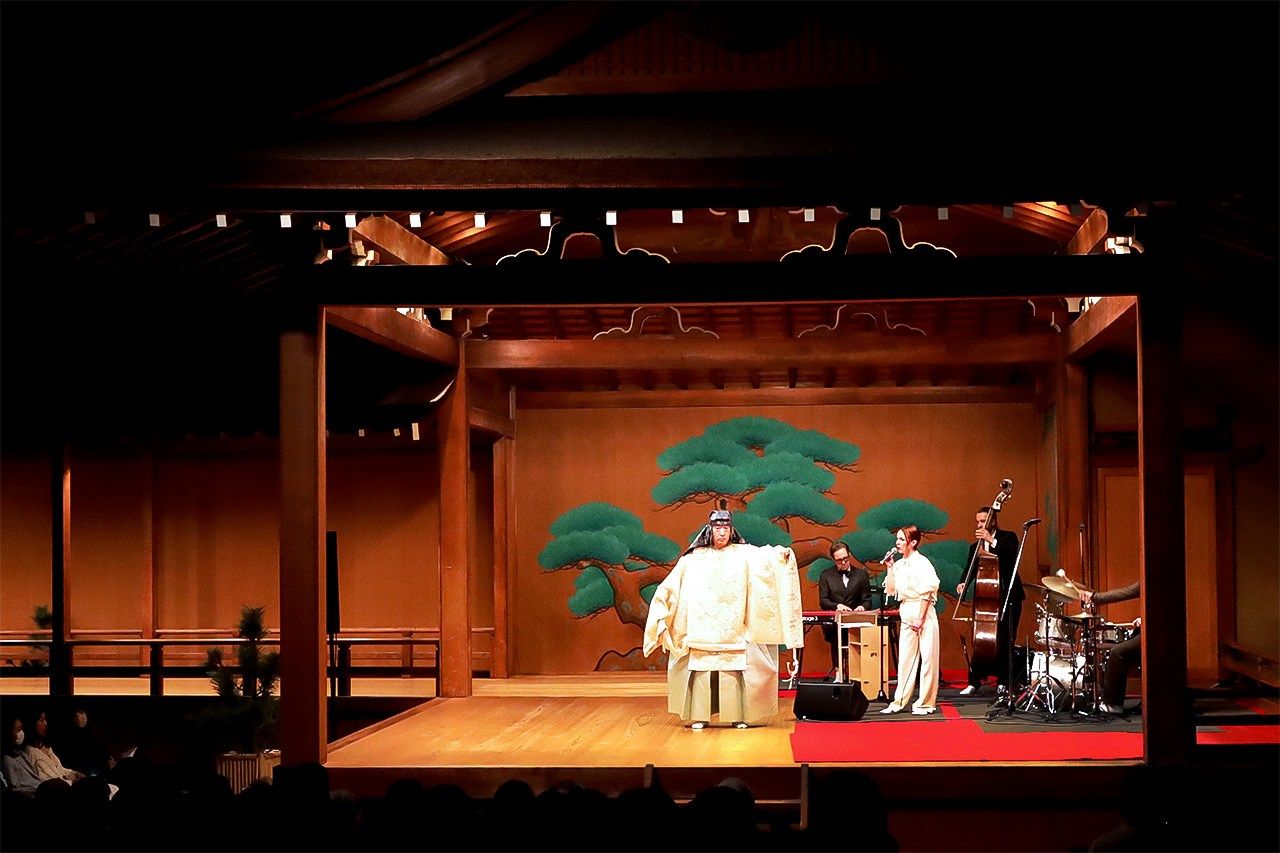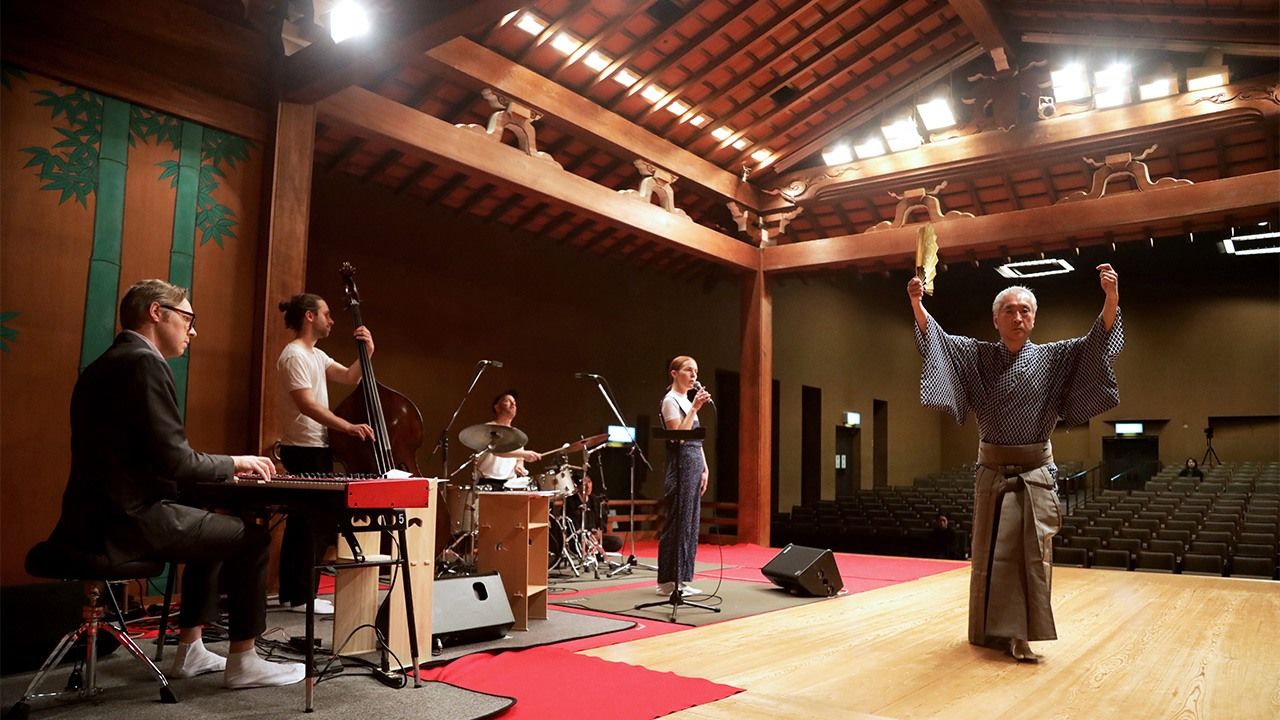
“Cool Traditions” Stay in Tune with Modern Life
Between Reality and Dream: Swedish Jazz Meets Nō Theater
Culture- English
- 日本語
- 简体字
- 繁體字
- Français
- Español
- العربية
- Русский
“Dear Old Stockholm” is a standard jazz number first performed by saxophonist Stan Getz in 1951 and later by other jazz greats like Miles Davis and Chet Baker. When I first heard it, the cool yet pensive melody filled my heart with melancholy. Its blues-based qualities seemed to echo Japanese sensibilities. Intrigued, I did some research and learned that the tune originated with a Swedish folk song.
Apparently, Stan Getz was inspired on a visit to Sweden by the traditional folk song “Ack Värmeland, du sköna,” a melancholic melody born of the Nordic endurance of harsh winters. The song’s sad melody speaks to something deep within the Japanese mind.
Värmeland is a western region of Sweden bordering on Norway that has an abundance of forestland and lakes. It is the birthplace of Selma Lagerlöf (1858–1940), Nobel Prize Laureate and author of works like Nils Holgerssons underbara resa genom Sverige (The Wonderful Adventures of Nils). To this day, the trees, forests, and rocks of the region seem imbued with spirits from an ancient animistic era predating the introduction of Christianity, another aspect that reverberates with Japanese sensibilities.
Marking 500 Years of Independence
It was Sassa Tomoki—aka Tom Sassa—who introduced Swedish jazz into Japan over a span of more than twenty years through his Spice of Life label, a company he launched in 2001. He has worked studiously to not only produce high-quality Swedish jazz albums but also to bring Swedish jazz musicians to perform in Japan. In 2007, he was awarded the Royal Order of the Polar Star by the King of Sweden for his contributions to disseminating Swedish music culture in Japan.
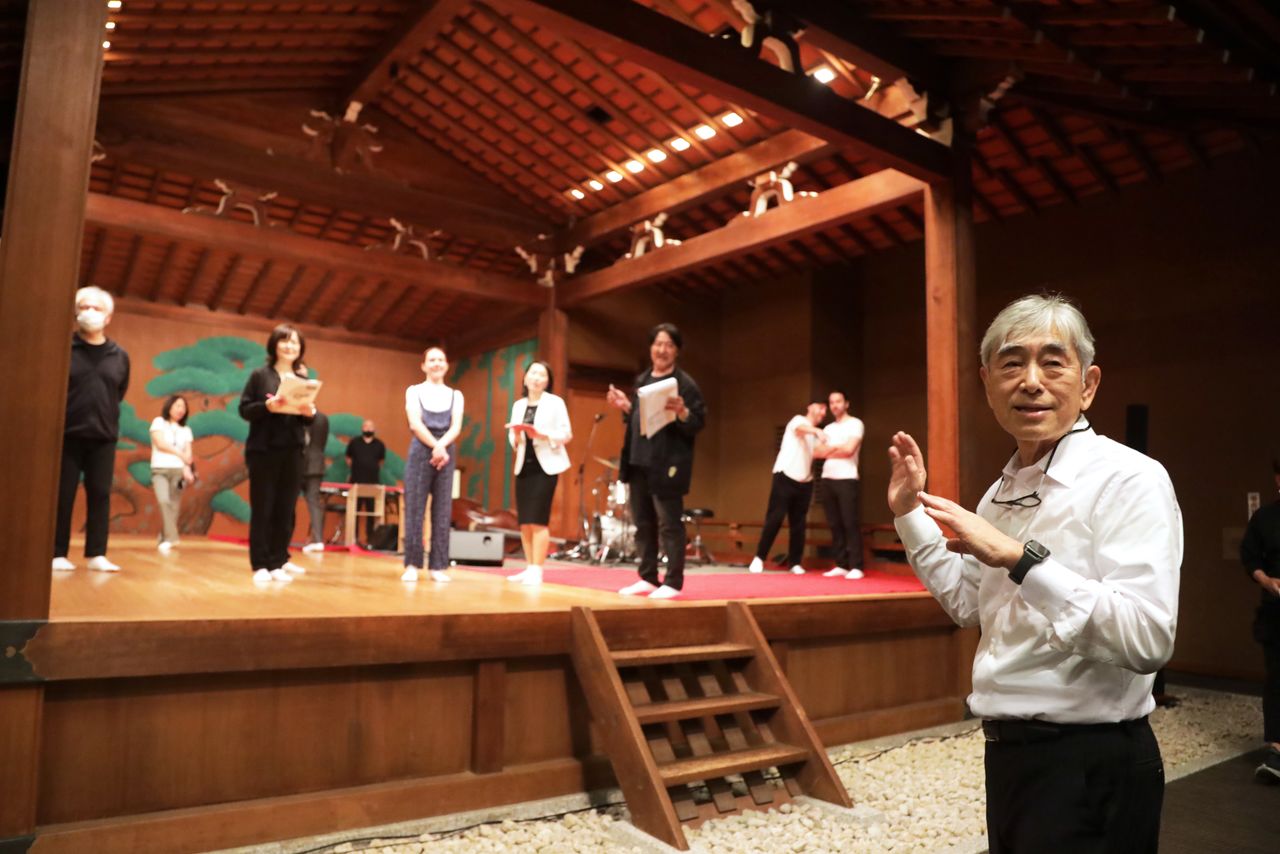
Sassa Tomoki, Spice of Life president, helped to coordinate this year’s Sweden Jazz Week.
Sassa played a major role in bringing about this year’s Sweden Jazz Week, a combination of live music events held from May 16 to 23, 2023, to commemorate Sweden’s 500 years as an independent nation following its departure from the Kalmar Union with Denmark and Norway in the sixteenth century. Performing during the week were 11 renowned Swedish jazz musicians, including the pianist Lars Jansson, singer Isabella Lundgren, and guitarist Ulf Wakenius. Performances were held at six different locations in Tokyo’s Marunouchi, Shibuya, Roppongi, Kichijōji, and Hamarikyū districts.
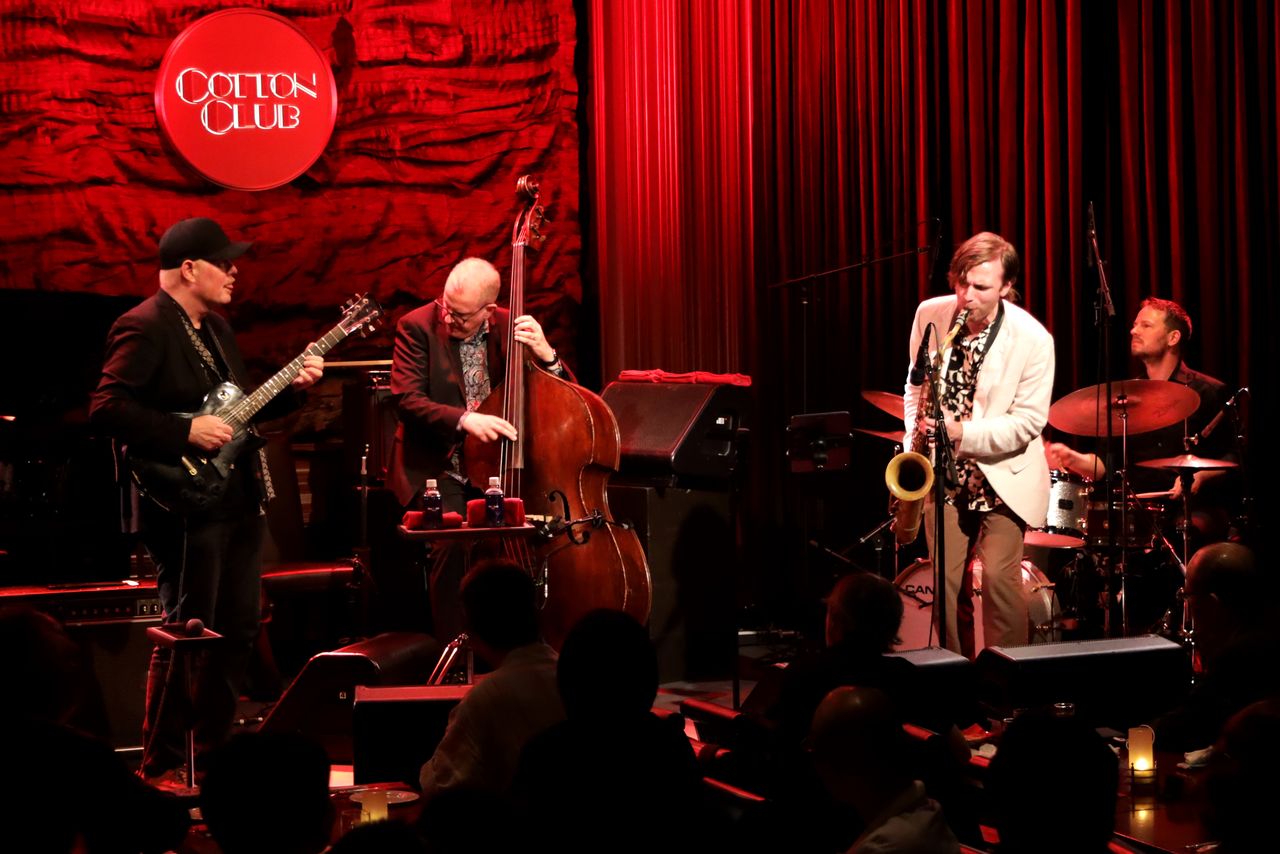
Ulf Wakenius (left) and his group are among Sweden’s leading jazz performers.
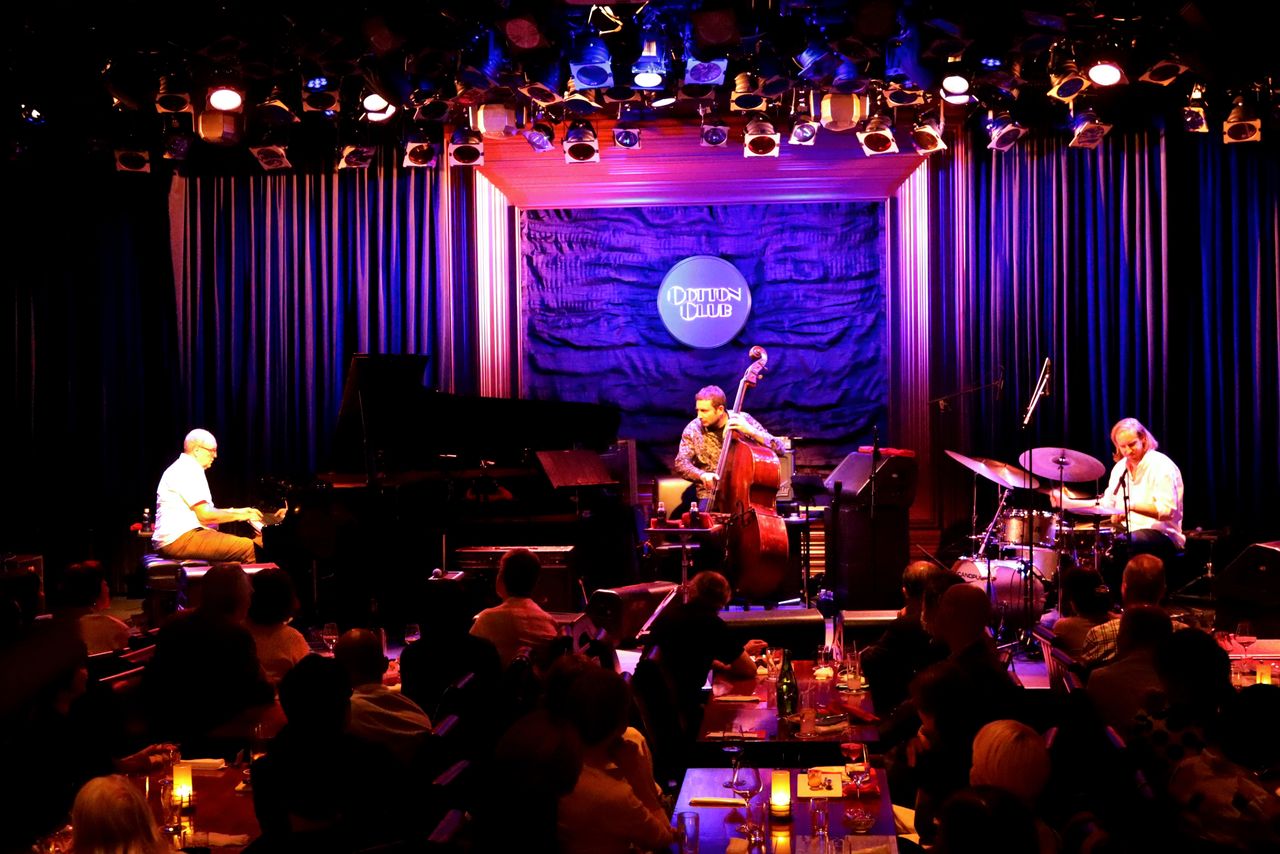
World-renowned pianist Lars Jansson, leader of the Lars Jansson Trio, has been a driving force behind the popularity of Swedish jazz in Japan.
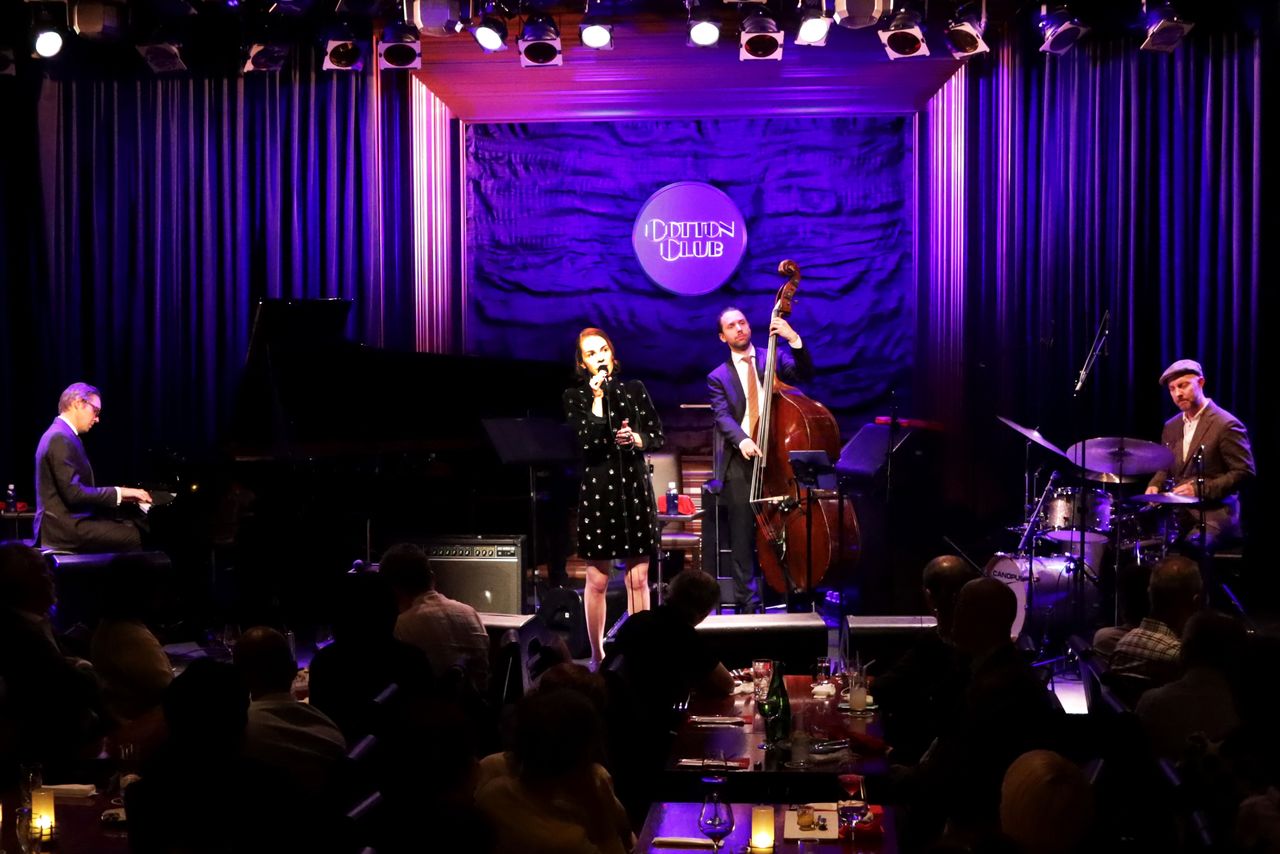
Isabella Lundgren (center), performing with her trio, envelopes her audience in nostalgic warmth with her sweet voice.
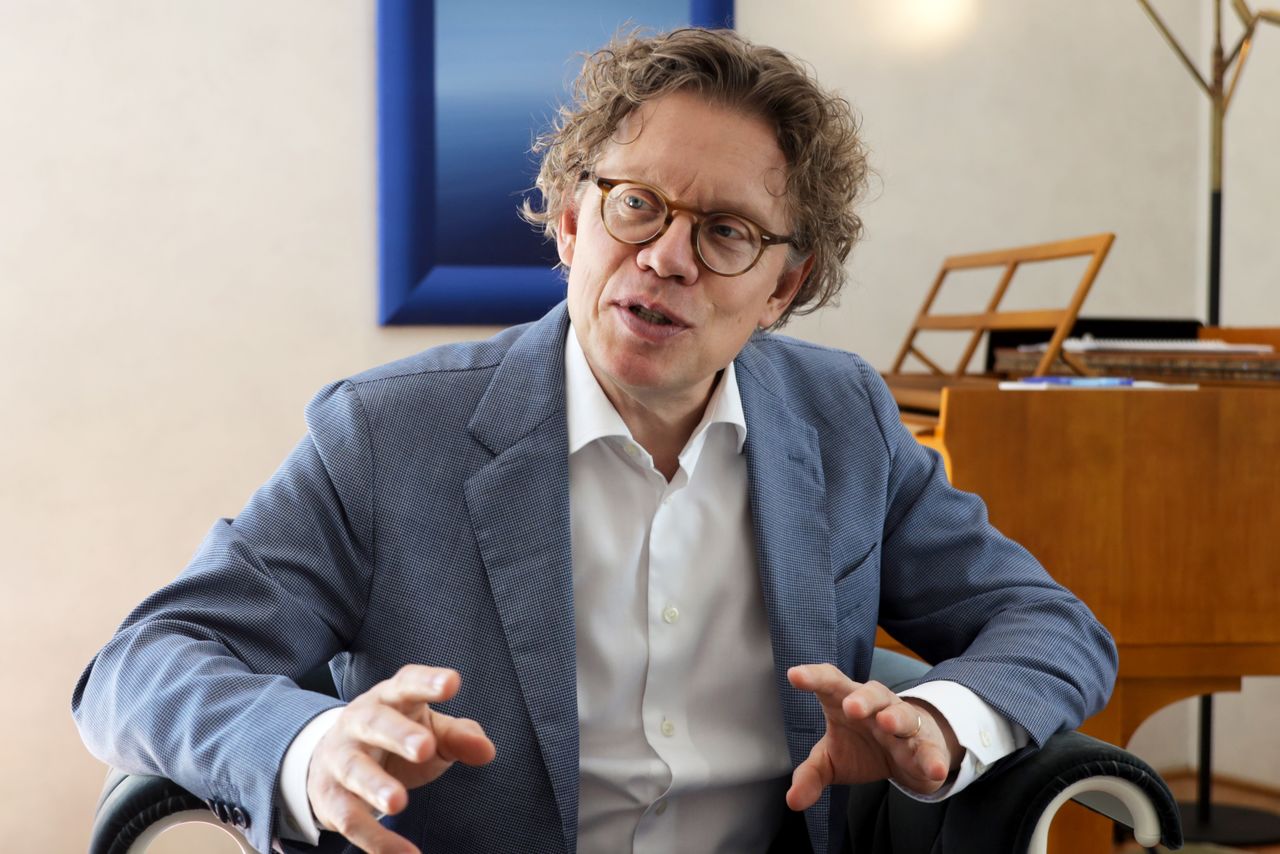
Sweden’s ambassador to Japan, Pereric Högberg.
“Every one of our performers returns home full of praises for Japan,” says Pereric Högberg, Sweden’s ambassador to Japan. “This kind of interaction between the people of our two distant nations is important because it fosters mutual understanding and respect for our respective cultures.”
Dancing for Värmeland
Worthy of special note was the May 16 Swedish jazz and nō collaboration at the Hōshō Nō Theater kicking off the start of the Jazz Week. The event had three parts: In Part 1, nō actor Takeda Isa performed the shite lead in a scene from the nō drama “Tenko,” and in Part 2, Lundgren sang to the accompaniment of her three band partners. Finally, in Part 3, after Isa’s performance of the nō dance “Izutsu,” her father, Takeda Takashi, and Lundgren put on a collaborative performance.
The theater is enveloped in hushed anticipation as Takashi makes his way across the bridgeway to the main stage, sliding his feet silently, one in front of the other.
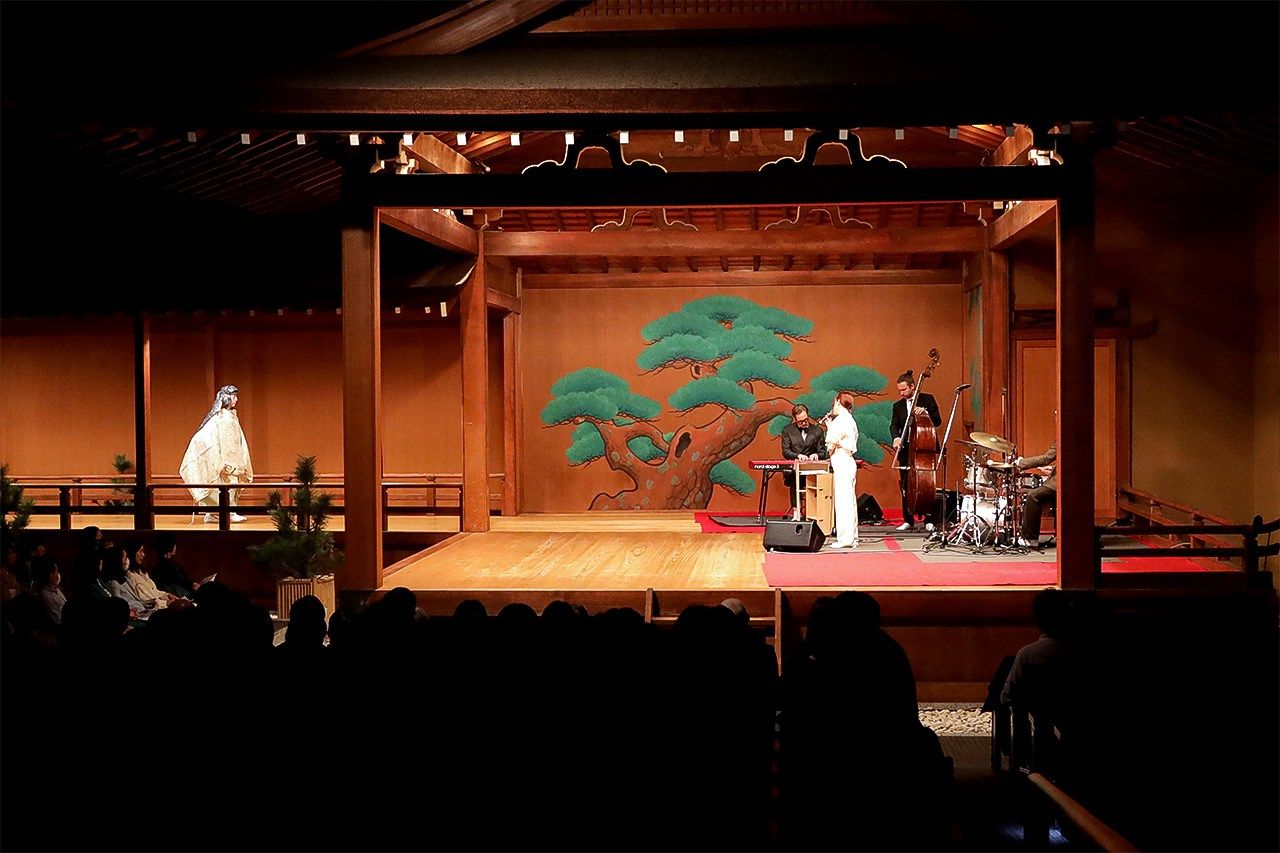
Takeda Takashi proceeds slowly along the hashigakari, the bridgeway to the main stage.
Quietly, Isabella Lundgre’s trio of musicians begin to play the familiar tune, “Ack Värmeland, du sköna,” and Isabella’s clear voice rings out, filling the nō theater with wistful, sad song, drawing everyone on stage and in the audience into a Nordic winter forest under melancholic skies.
In the interlude following the song, Takashi begins to dance, a traveler on the way to Värmeland. His movements are gentle and quiet yet firm and riveting. Despite the swirling Nordic wind, his countenance remains resolute, his step firm in his quest for light. The audience is captivated by his determination and rejoices with him as he at last reaches the bright light of spring that fills both traveler and the forest with delight and joy.
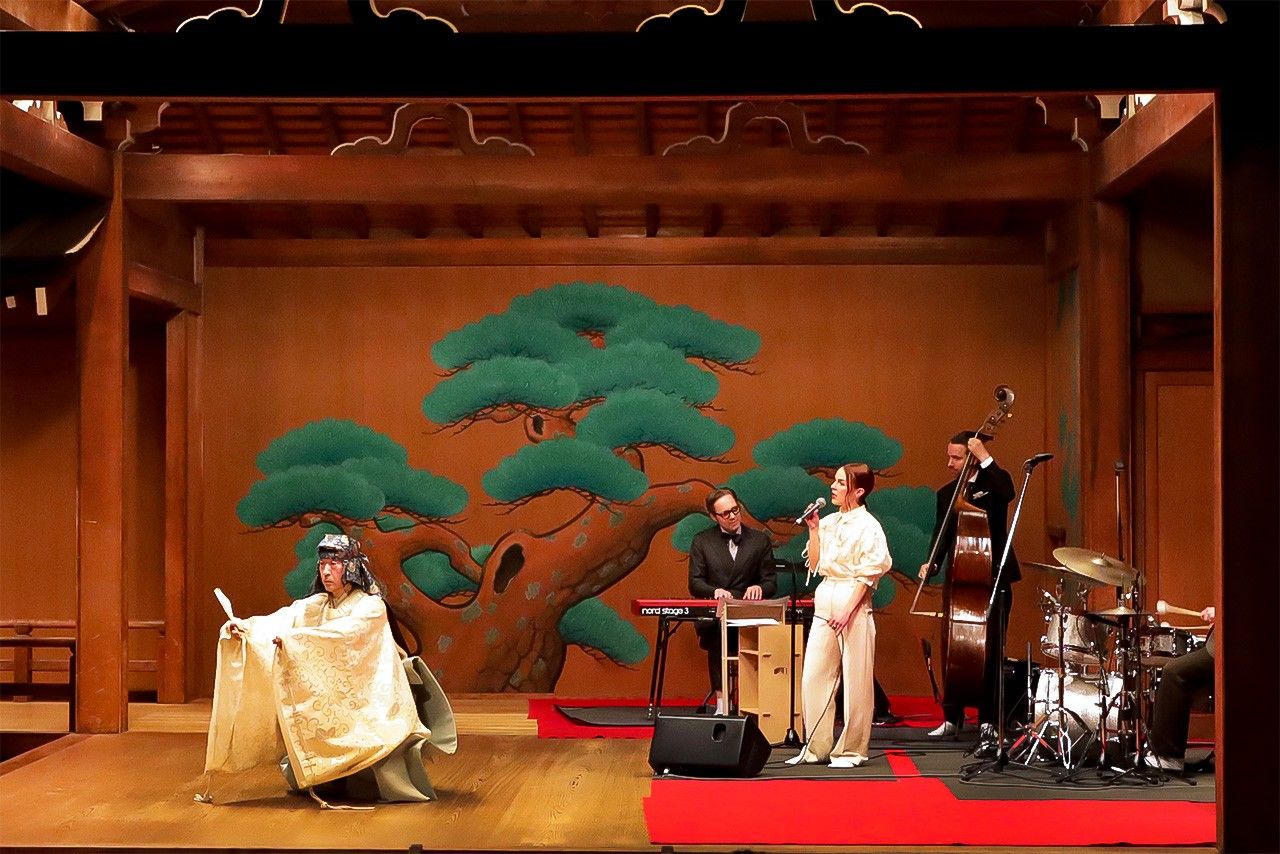
Takashi (left) improvises, synchronizing his movements with Isabelle’s voice.
The key themes of this collaboration were “traveler,” “winter,” “nature’s might,” and “emerging spring,” and, indeed, each of these themes was brought to life in the eloquent melding of jazz and nō. The audience was made to feel the emerging spring as the darkened stage brightens under a shining light.
A Collaboration of Improvisation
When Sassa first approached Isa to ask if it might be possible to perform jazz on a nō stage, Isa instead suggested a fusion performance integrating jazz and nō.
“The winter night in Sweden is long,” Sassa says. “It doesn’t get light until after 10 am, and then it darkens again before 2 pm. The spring that comes after this harsh winter is special and yearned for in a way we can’t possibly grasp. As we talked about this, we agreed that the collaboration should be based on two concepts, the joy of transitioning from winter to spring and our respect for the gods of nature.”
The two could see underlying similarities in the cultures of Japan and Sweden. Still, nō is an art that emphasizes form while jazz accentuates free expression. “Basically, our intention is not to play a role,” says Isa. “No matter who or what we are matched up against on the stage, our focus is on recreating the kata, the stylized forms that have been passed down through 650 years of the theatrical art of nōgaku. “
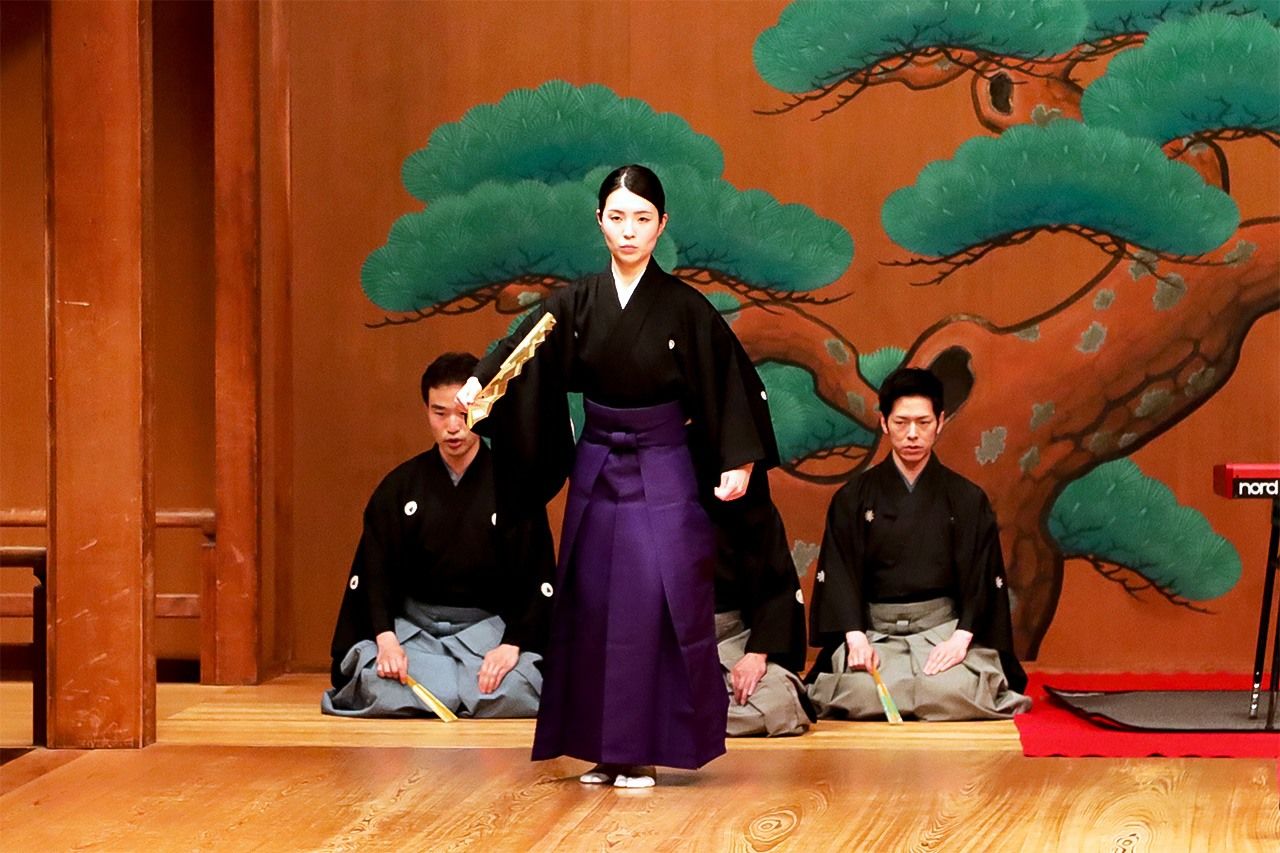
Takeda Isa performs the nō dance “Izutsu.”
There is no way to reconcile such divergent arts. Jazz is improvisation, nō is highly stylized. They would simply have to collaborate on the spur of the moment. The two decided that the nō dance should be performed during the jazz interlude when the audience would not be distracted by the words of the song.
Nō is often characterized as an art of “intervals.” For example, the nō performer passes over a covered bridgeway to get to the stage. This passageway represents the interval between the otherworld and this world. Many nō plays open with conversations between spirits and humans, and the storyline progresses in the hazy interval between dream and reality. The very act of watching a nō performance transports the audience out of the real world into a dreamlike time-space of play. Given this, it becomes obvious that a collaboration between jazz and nō can only take place within the span of this dreamlike interval, in other words, during a musical interlude. I could feel myself drawn into the stage as I watched the nō performer dance to the music of “Ack Värmeland, du sköna.”
The Swedish Spring of the Sweet Jazz Trio
After the performance had ended, I told Sassa, “I could feel spring in the collaborative performance, a spring that was much more than just a gentle season. It reminded me of the special value of the Nordic spring.” He then told me about the Sweet Jazz Trio and how they led to the creation of the Spice of Life label.
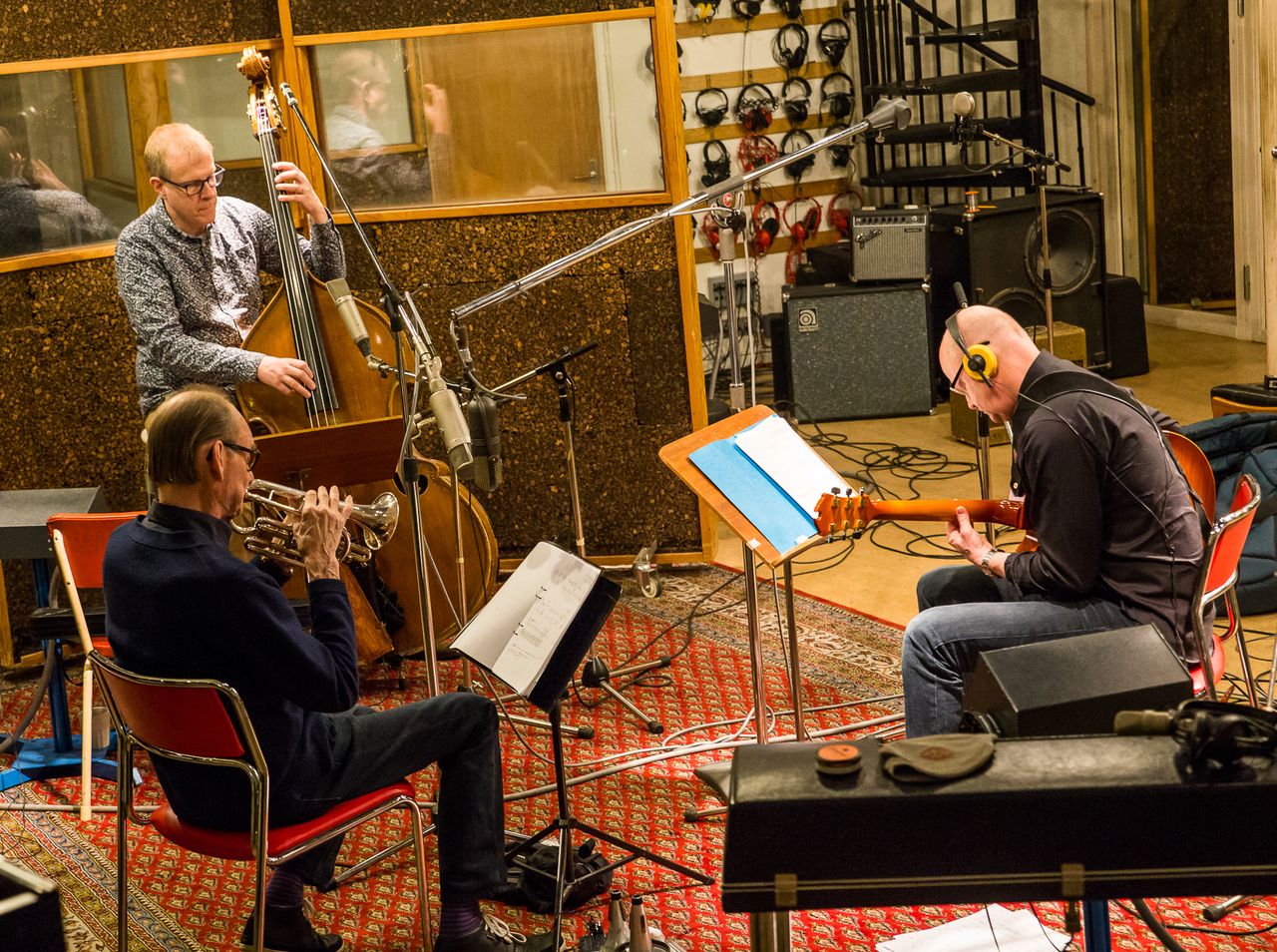
The Sweet Jazz Trio were responsible for sparking the Scandinavian jazz boom in Japan. They have not been active since they released their last album in 2019. This time, former Sweet Jazz Trio bassist Hans Backenroth came to Japan for the Sweden Jazz Week as a member of guitarist Ulf Wakenius’ group. (Photo courtesy of Spice of Life)
Sweet Jazz Trio is an instrumental ensemble of cornet, guitar, and bass offering a chamber-music like interplay of sounds. Impressed by their renditions, Sassa sought to introduce their music to Japan by recording a CD. Like the group’s name, their music was sweet and brought to mind thoughts of fleeting spring.
“When I talked about this, people objected, telling me that jazz isn’t a sweet, soft genre of music,” Sassa laughs. “I was over 50 and had just started up my own independent label without thinking about how I was going to make money with it. I’m sure they thought I was being foolhardy. But, you know, Sweet Jazz Trio’s music wasn’t just sweet, it was kind and empathic. The spring that comes after a harsh winter, that’s exactly what they offered.”
I listened to his words and thought again that the performance I had just witnessed did indeed evoke spring in Sweden, a bitterness followed by sweetness. The collaboration of nō and Swedish jazz was bitter and yet sweet, like that bridgeway to the nō stage, linking winter to spring. Sassa and all the people who had worked to bring about this event had succeeded in blending Japanese and Swedish culture in the hazy interval between reality and dream.
(Originally published in Japanese. Text by Yoshimura Nobuhiko; photos by Nagasaka Yoshiki. Banner photo: Rehearsal of the May 16 performance, “Swedish Jazz Meets Nō Theater,” at the Hōshō Nō Theater.)
